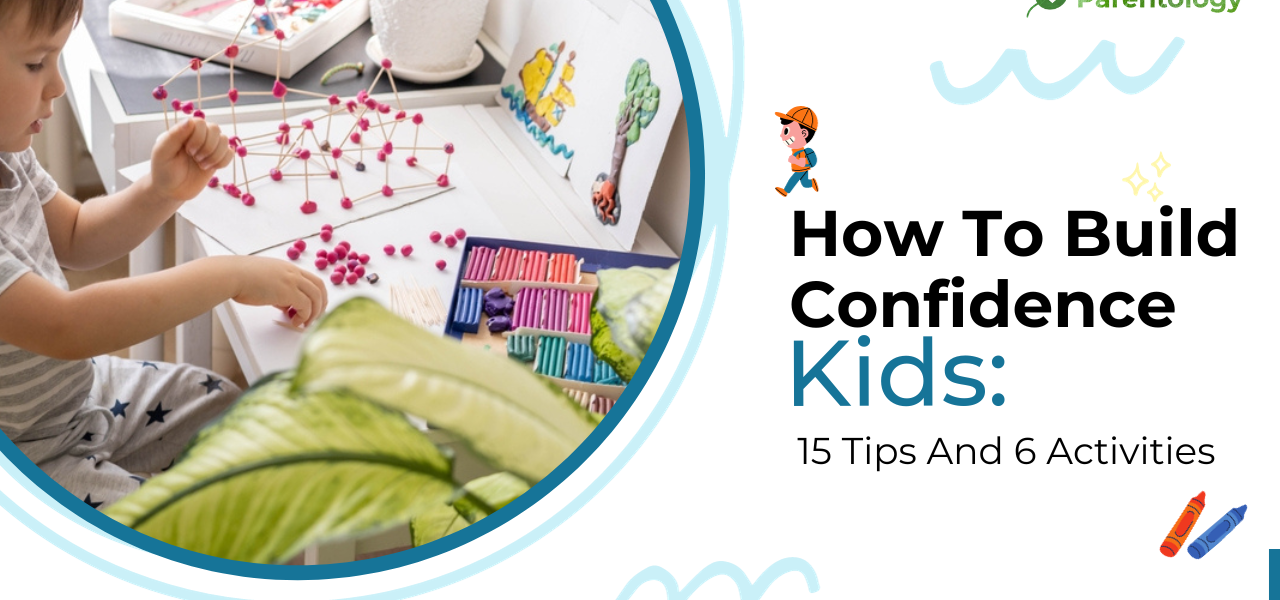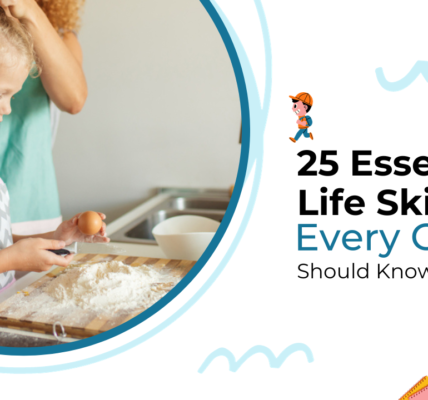How To Build Confidence In Kids: 10 Tips And 6 Activities
Building confidence in children is a crucial aspect of their development, impacting their social, academic, and personal lives. In this guide, we’ll explore practical tips and engaging activities to foster self-assurance in kids. Confidence-building isn’t a one-size-fits-all approach, so let’s delve into diverse strategies of how to build confidence in kids that cater to different aspects of a child’s growth.
Why is Building Confidence Important?
Confident children are more likely to:
- Excel Academically: Confidence positively influences a child’s ability to grasp and apply new concepts.
- Develop Strong Social Skills: Confidence helps in forming healthy relationships with peers.
- Face Challenges: A confident child is better equipped to tackle challenges and setbacks.
Tips of How to Build Confidence in Kids
1. Encourage Positive Self-Talk
Teach your child to replace negative thoughts with positive affirmations. For example, instead of saying, “I can’t do this,” encourage them to say, “I’ll give it my best shot.”
2. Celebrate Achievements, Big or Small
Acknowledge and celebrate your child’s accomplishments, whether it’s acing a test, tying shoelaces, or making their bed. This fosters a sense of achievement.
3. Promote Independence
Allow your child to make decisions and take responsibility for small tasks. This empowers them and builds a sense of autonomy.
4. Provide Constructive Feedback
Offer feedback that focuses on effort and improvement rather than simply praising innate abilities. This helps them understand the value of hard work.
5. Set Realistic Goals
Help your child set achievable goals. Break larger tasks into smaller, manageable steps, fostering a sense of accomplishment with each milestone.
6. Encourage Extracurricular Activities
Participating in sports, arts, or clubs can boost confidence by providing opportunities for skill development and social interaction.
7. Teach Resilience
Help your child understand that setbacks are a part of life. Teach them how to bounce back from failures and see them as opportunities to learn.
8. Promote Positive Body Image
Encourage a healthy relationship with their bodies by emphasizing the importance of being active and making nutritious food choices.
9. Foster Positive Relationships
Support positive friendships and teach them how to communicate effectively, resolve conflicts, and be empathetic.
10. Lead by Example
Demonstrate confidence in your own abilities and showcase resilience in the face of challenges. Children often mimic their parents’ behaviors.
Activities to Boost Confidence
1. Role-playing
Engage in role-playing scenarios that require decision-making and problem-solving. This builds confidence in handling real-life situations.
2. Journaling
Encourage your child to keep a journal to reflect on their thoughts and achievements. This helps in recognizing and celebrating their progress.
3. Public Speaking Practice
Practice speaking in front of family members, gradually increasing the audience size. This helps develop communication skills and confidence in public speaking.
4. Team Building Activities
Participate in team-building exercises, fostering cooperation, leadership skills, and a sense of belonging.
5. Art and Creativity
Engage in creative activities like drawing, painting, or crafting. The tangible results of their efforts can boost confidence.
6. Outdoor Challenges
Encourage outdoor activities that involve a degree of challenge, such as rock climbing or hiking. Conquering physical challenges boosts confidence.
Frequently Answered Questions(FAQs)
Q1: At what age should I start building confidence in my child?
A1: Confidence-building can start as early as toddlerhood, with age-appropriate activities and encouragement.
Q2: Can confidence-building activities be adapted for shy children?
A2: Absolutely. Tailor activities to suit a shy child’s comfort level, gradually introducing new challenges.
Q3: How do I address setbacks without damaging my child’s confidence?
A3: Focus on the lessons learned from setbacks, emphasizing that mistakes are a natural part of learning and growth.
Q4: Are there signs that my child lacks confidence?
A4: Signs may include avoiding challenges, seeking constant reassurance, or expressing self-doubt. Observation and open communication are key.
Q5: Can overpraising impact a child’s confidence negatively?
A5: Yes, excessive praise can set unrealistic expectations. Offer sincere and specific praise for effort and improvement.
Q6: Are there cultural differences in building confidence in children?
A6: Cultural values may influence confidence-building approaches. It’s essential to consider and respect cultural nuances.
Q7: How can I support my child if they face bullying that affects their confidence?
A7: Encourage open communication, report bullying to appropriate authorities, and seek professional support if needed.
Q8: Can confidence-building activities be integrated into homeschooling?
A8: Yes, many activities, such as project-based learning and collaborative projects, can be adapted for homeschooling environments.
Q9: What role do teachers play in building confidence?
A9: Teachers can provide a supportive learning environment, offer constructive feedback, and recognize and celebrate students’ achievements.
Q10: Is there a connection between physical activity and confidence?
A10: Yes, physical activity releases endorphins, contributing to a positive mindset and enhanced self-esteem.
Conclusion
Building confidence in kids is an ongoing process that requires a combination of positive reinforcement, constructive feedback, and engaging activities. By incorporating these tips and activities of how to build confidence in kids into your parenting approach, you can nurture a confident and resilient child. Remember, each child is unique, so create your approach to suit their individual needs. For more parenting insights, visit Parentology.
This comprehensive guide provides valuable insights into building confidence in kids through practical tips, engaging activities, and answers to common questions. If you have further inquiries or need additional guidance, feel free to explore more on Parentology or reach out for personalized advice.





